Constructed in 1977 by prolific boat builder Charles David Lawrence, the fishing vessel Lola Catherine is a representative example of the wooden boat building tradition in southern Maryland. Built in the Chesapeake Deadrise style, the 32-feet 8-inch long boat reflects the evolution of 19th Century Potomac Dory boats adapted to support larger engines and higher speeds. [1]
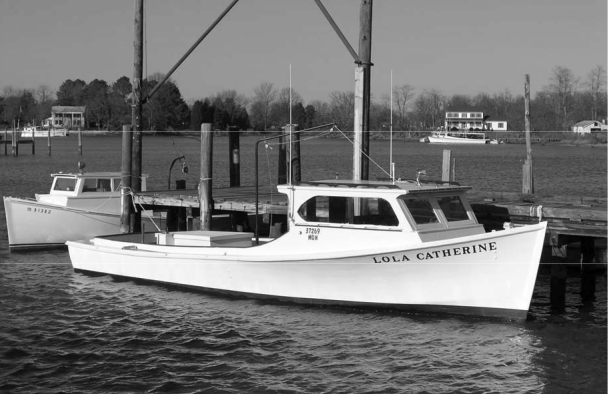
The boat has a beam of 10 feet five inches, and a depth of two feet seven inches. The structure of the boat is two-inch sided, three-inch molded frames spaced approximately 18 inches on center. The forward frames are flared to prevent spray. Deck knees are located at frames 10, 13, 16, and 19. Floor knees are located at frames 11 and 14. The hull is planked fore and aft with a hard chine, but no chine log. The keel has a maximum width of 7 inches. A skeg extending from the bottom of the boat supports the propeller shaft and rudder. In addition to a helm, the pilot house at the fore end of the boat includes a dinette and workbench. The space under the foredeck is used for storage. At the time of the survey the boat was powered by a Caterpillar marine diesel with a v-drive housed in a plywood box slightly abaft of amidships. There is a secondary helm on the starboard side near the engine box and a crab-pot puller.
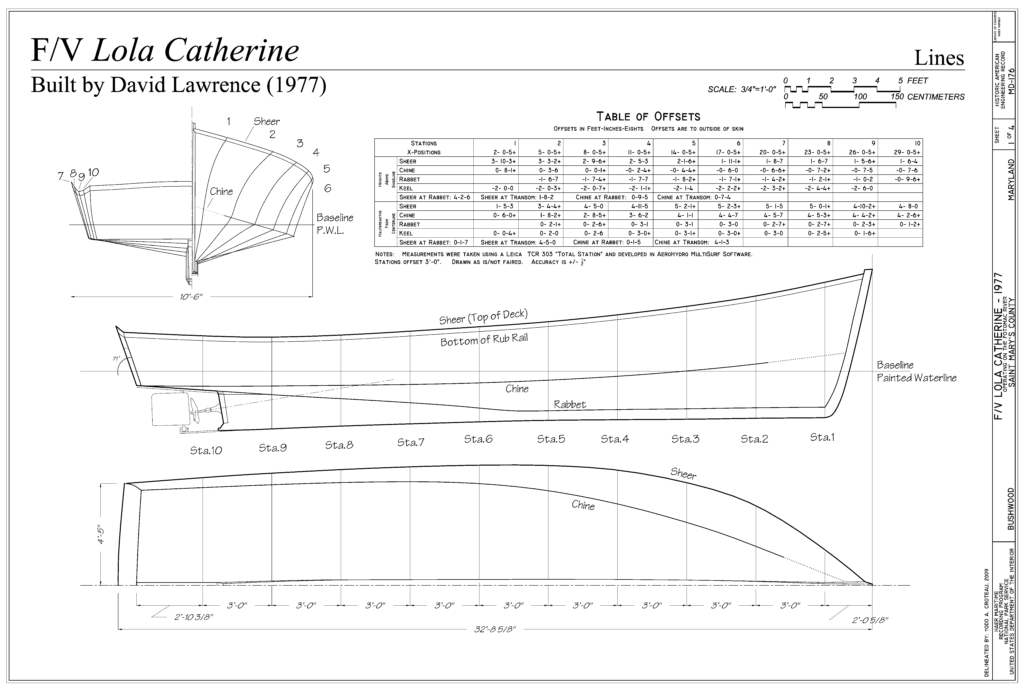
The rear half of the boat has a wide side deck and low freeboard to facilitate oyster tonging and working crab pots. At the time of the survey the boat was used mainly for crabbing and trotlining.
Lawrence was a self-taught boat builder who didn’t use plans. Boatbuilding started off as a hobby after he was discharged from the military in 1946, but quickly grew in scale. By his own estimate, Lawrence built about 1,700 boats during his career. His favorite were 18-foot skiffs that could carry 25 bushels of oysters with a 60-horsepower engine. He could build one of them a day, and sold them for $125 each.
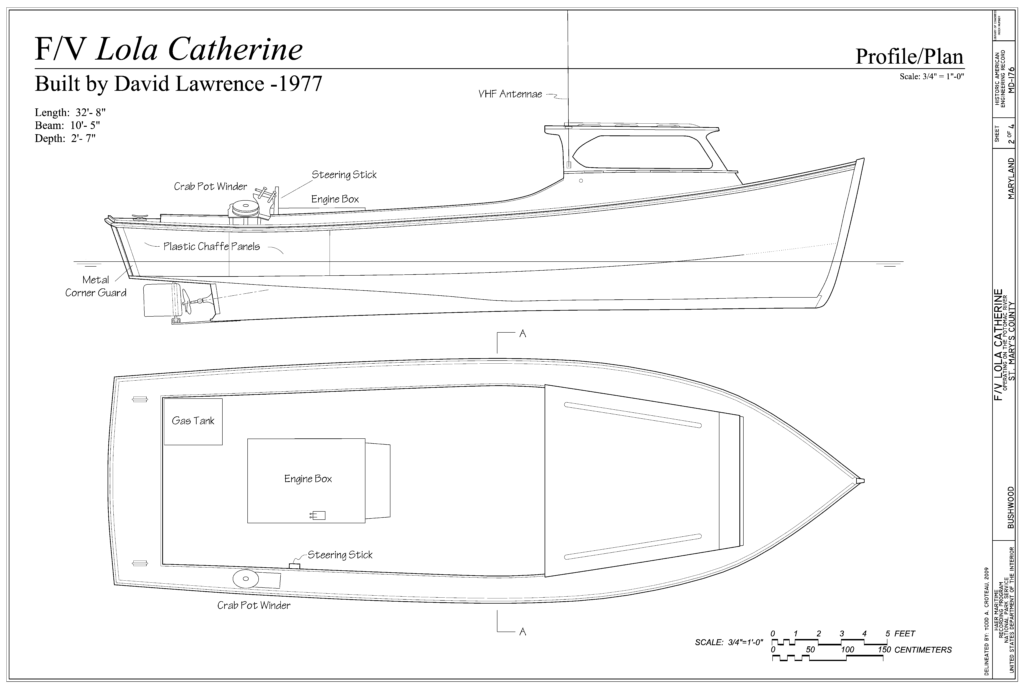
All of Lawrence’s boats were of his own design. The larger ones were planked fore-and aft, in keeping with the boatbuilding traditions of the Seventh District of St. Mary’s County, where builders kept to this method long after most Chesapeake Bay builders switched to cross-planking. Lawrence’s boats were in the Potomac River dory boat fashion with v-bottom hulls with a box stern and a more angled bow with greater flare. He built his boats “on their feet,” that is, right side up.
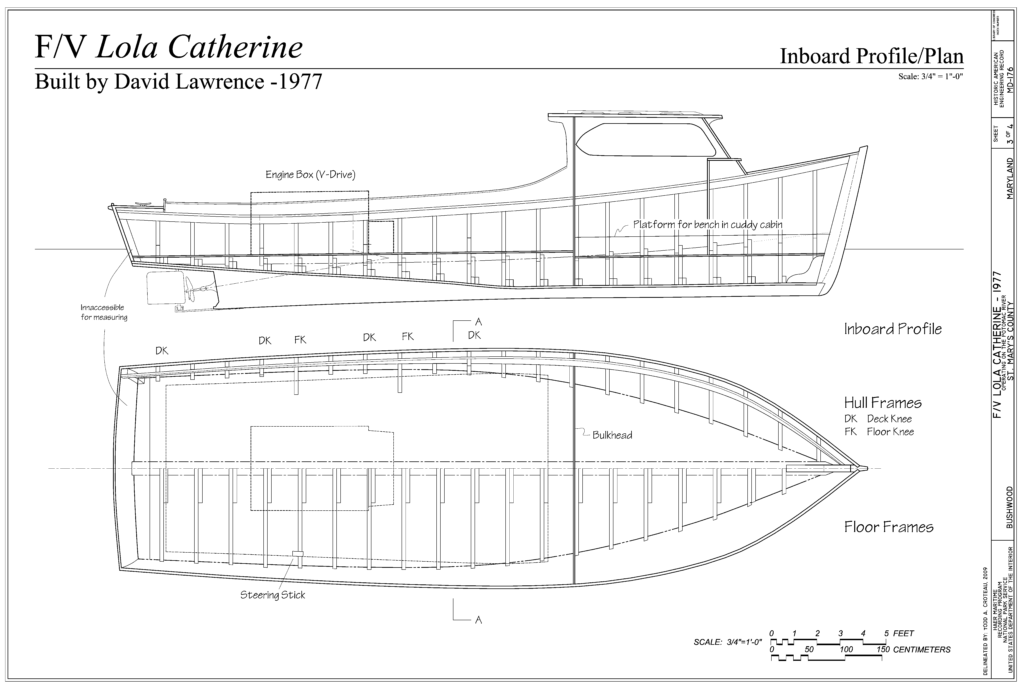
Lola Catherine is an excellent example of the variety of wooden boats build in St. Mary’s County during the second half of the 20th Century. During this period the seafood industry was experiencing prosperity, and there was a demand for wood boats. The Lola Catherine represents a style of construction limited almost exclusively on the Chesapeake Bay to the Seventh District of St. Mary’s County.
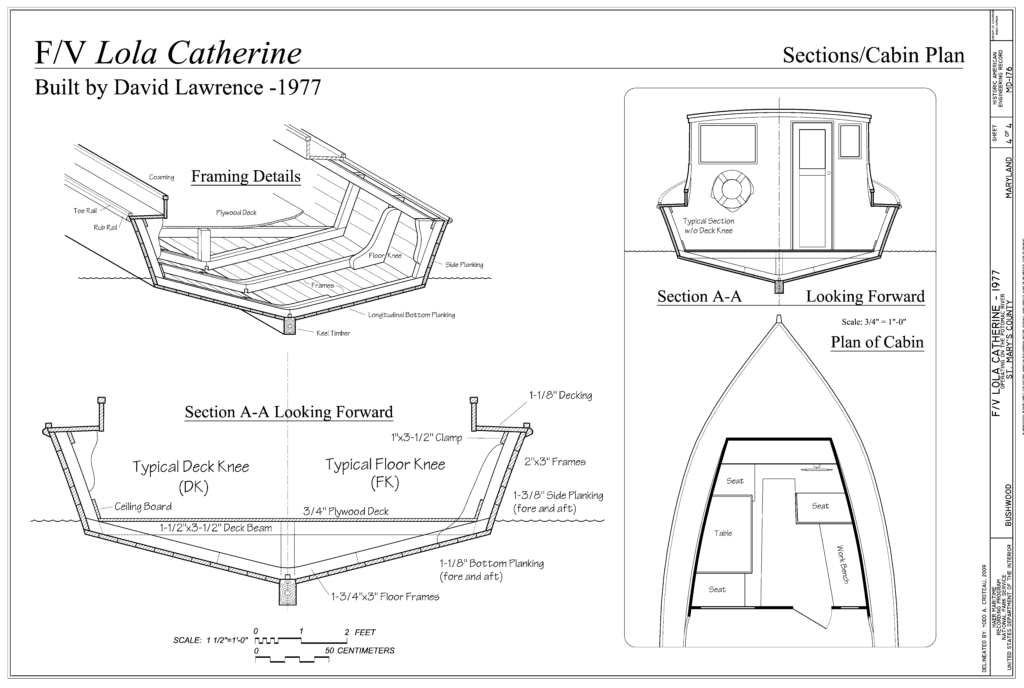
1 Historic American Engineering Record report MD-176, compiled by historian Richard Dodds, 2009, Library of Congress. The Historic American Engineering Record (HAER) is a long-range program that documents and interprets historically significant engineering sites and structures throughout the United States. HAER is part of Heritage Documentation Programs (Richard O’Connor, Manager), a division of the National Park Service, U.S. Department of the Interior. The HAER Maritime Program is managed by Todd Croteau, HAER Architect. The Southern Maryland Boat Builders project was funded in 2009 by the Calvert Marine Museum, Solomons, Maryland. The historical data was prepared by Richard Dodds, Curator of the Calvert Marine Museum. Drawings and large-format photographs were prepared by Todd A. Croteau. George Surgent, Calvert Marine Museum, assisted with fieldwork.